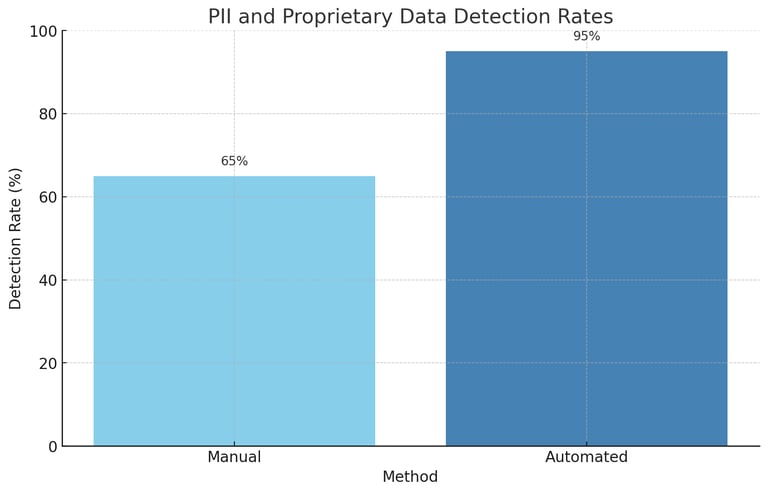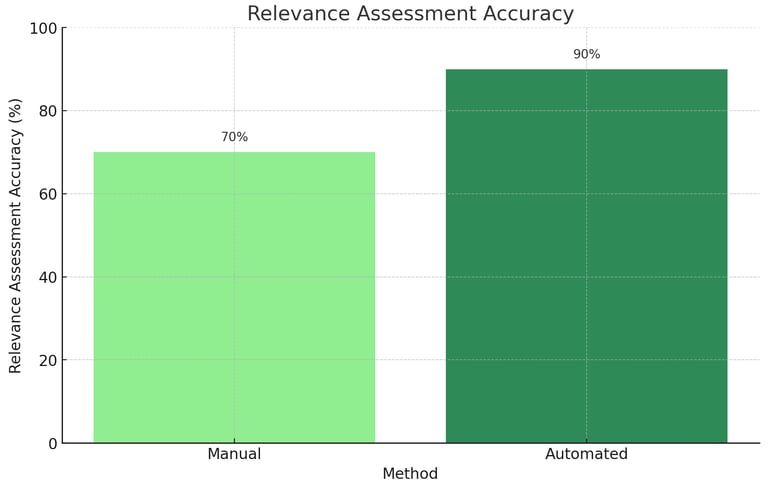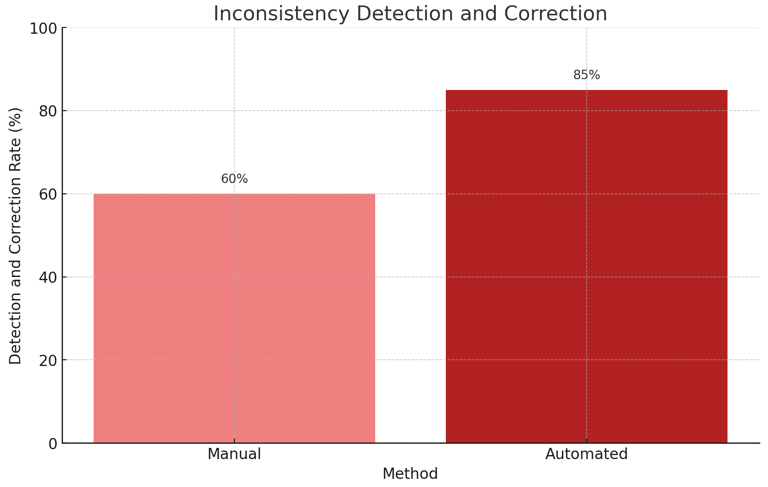AI Projects
Challenges:
Data Security: Identifying and protecting sensitive information, such as Personally Identifiable Information (PII) and proprietary data, is paramount to prevent data breaches and maintain user trust.
Data Relevance: Ensuring that the data used is relevant to the specific problem the LLM model is addressing to enhance model accuracy and performance.
Data Quality: Detecting and correcting inconsistencies and outdated information to avoid skewing the model's results and decisions.
Latest Trends and Techniques
1. Automated Data Compliance
Automated systems for verifying data compliance have become increasingly sophisticated. These systems use advanced algorithms to detect PII and proprietary data, ensuring that sensitive information is flagged and handled appropriately before it reaches the LLM models.
2. Data Relevance Analysis
Techniques for analyzing data relevance have advanced, leveraging machine learning to assess how closely data aligns with the specific problem the model is intended to solve. This ensures that only the most pertinent data is used, improving the model's efficiency and outcomes.
3. Inconsistency Detection
Machine learning algorithms are now capable of identifying and correcting inconsistencies within datasets. By flagging and resolving discrepancies, these systems help maintain high data quality, which is crucial for reliable model performance.






Data Security
Chart 1: PII and Proprietary Data Detection Rates:
This chart shows the effectiveness of Cgrads automated checks in detecting PII and proprietary data compared to manual methods.Explanation: Automated checks significantly outperform manual methods in detecting sensitive information, ensuring better data security.
Data Relevance
Chart 2: Relevance Assessment Accuracy
This chart compares the accuracy of data relevance assessment using traditional methods versus Cgrads automated relevance analysis.Explanation: Cgrads automated analysis consistently provides higher accuracy in assessing data relevance.
Data Quality
Chart 3: Inconsistency Detection and Correction
This chart illustrates the effectiveness of Cgrads in detecting and correcting data inconsistencies compared to traditional methods.Explanation: Automated systems detect and correct inconsistencies more effectively, ensuring higher data quality.
1. PII and Proprietary Data Detection Rates
This chart shows that automated methods significantly outperform manual methods in detecting sensitive information, with a detection rate of 95% compared to 65%.
2. Relevance Assessment Accuracy
This chart illustrates that automated relevance assessment provides higher accuracy, reaching 90%, compared to 70% for manual methods.
3. Inconsistency Detection and Correction
This chart demonstrates that automated systems detect and correct inconsistencies more effectively, with an 85% success rate, compared to 60% for manual methods.
Solution:
Cgrads provides a comprehensive solution by offering automatic checks that ensure data compliance and quality. These checks include:
Verification of PII and Proprietary Data: Automatically detecting and managing sensitive information to prevent unauthorized access and use.
Data Relevance Assessment: Evaluating data to ensure it is pertinent to the specific problem the LLM model is addressing.
Inconsistency Detection: Identifying and rectifying inconsistencies to maintain data quality and prevent skewed model outcomes.
Key Benefits
Enhanced Data Security: Protects sensitive information, reducing the risk of data breaches and ensuring compliance with regulations.
Improved Model Accuracy: Ensures that only relevant data is used, enhancing the model's performance.
High Data Quality: Maintains the integrity of data, leading to more reliable and accurate model results.


